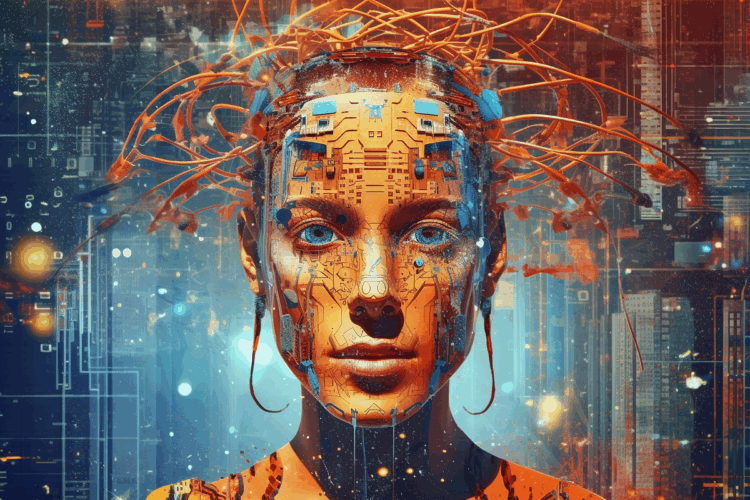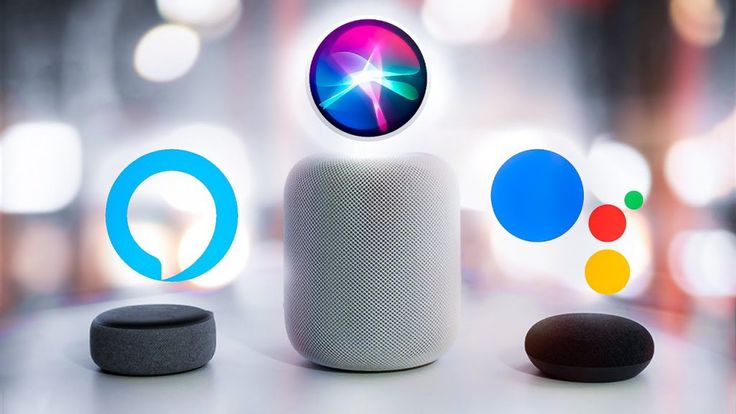In today’s fast-paced world, where information overload and endless tasks often feel overwhelming, the quest for greater efficiency and seamless productivity has become universal. Stepping into this crucial role are AI assistant apps, sophisticated software solutions that leverage artificial intelligence to help us manage everything from our daily schedules and communication to complex information retrieval and creative tasks. These intelligent companions are no longer mere digital novelties; they are evolving into indispensable tools, subtly but profoundly boosting our daily lives by streamlining workflows, personalizing experiences, and freeing up valuable mental bandwidth. From simple voice commands to complex data analysis, AI assistant apps are redefining what it means to be productive and organized in the digital age.
The Evolution of Digital Assistance: From Basic Tools to Intelligent Companions
To fully appreciate the current capabilities and future potential of AI assistant apps, it’s vital to trace their lineage, recognizing how they’ve evolved from rudimentary digital helpers to the sophisticated, often intuitive, companions we interact with today.
A. Early Digital Organizers and Rule-Based Systems
The journey began with simple digital tools designed to automate or organize specific tasks, primarily relying on pre-programmed rules.
- Personal Information Managers (PIMs): Early software like Microsoft Outlook, Lotus Organizer, or even basic digital calendars and contact books represented the first wave of digital assistance. They centralized information but required manual input and offered little in the way of intelligence.
- Simple Automation Scripts: Users or developers created basic scripts to automate repetitive tasks (e.g., file sorting, email filtering). These were effective for specific, predefined actions but lacked adaptability or understanding.
- Command-Line Interfaces (CLIs) and Menu-Driven Systems: Interactions were highly structured, requiring users to know specific commands or navigate hierarchical menus. There was no ‘understanding’ of natural language or user intent.
- Limitations: These early tools were reactive, not proactive. They couldn’t anticipate needs, learn from user behavior, or handle complex, unstructured queries. Their utility was limited by explicit programming, making them rigid and unscalable beyond their initial design.
B. The Dawn of Voice Assistants and Natural Language Processing (NLP)
A pivotal shift occurred with the advent of voice interfaces and the foundational advancements in Natural Language Processing (NLP). This enabled more human-like interaction.
- Early Voice Recognition: Technologies like Dragon NaturallySpeaking allowed for speech-to-text conversion, primarily for dictation. While revolutionary, accuracy was often limited, and context understanding was minimal.
- Smartphone Integration (Siri, Google Assistant, Alexa): The widespread adoption of smartphones provided the perfect platform for voice assistants. Apple’s Siri (2011), Google Assistant (2012), and Amazon’s Alexa (2014) became household names, allowing users to perform basic tasks (setting alarms, making calls, checking weather) through natural language commands.
- Improved NLP and Intent Recognition: These assistants leveraged significant breakthroughs in NLP, enabling them to better understand user intent, even with varied phrasing. This moved beyond keyword matching to semantic understanding.
- Limited Proactivity: While more interactive, these assistants were still largely reactive. They waited for a command and executed it, offering limited proactive suggestions or personalized insights without explicit prompting. Their integration with broader ecosystems was also initially somewhat siloed.
C. The Era of AI Assistant Apps: Predictive, Personalized, Proactive
Today’s AI assistant apps represent a significant leap forward, powered by more sophisticated AI, machine learning, and vast datasets. They are moving towards being truly intelligent, personalized, and proactive companions.
- Advanced Machine Learning (ML): Modern AI assistants are built on deep learning models, enabling them to understand complex contexts, learn from user interactions, and make increasingly accurate predictions and recommendations.
- Hyper-Personalization: They adapt to individual user preferences, habits, and historical data, offering tailored suggestions for scheduling, content, or task management. This moves beyond generic assistance to truly individualized support.
- Proactive Assistance: Leveraging predictive analytics, these apps can anticipate needs. They might suggest optimized routes before you ask, remind you about recurring tasks, or flag important emails based on your past behavior.
- Ecosystem Integration: Modern AI assistants seamlessly integrate with a multitude of apps and services—calendars, email, project management tools, smart home devices, health trackers—creating a unified digital experience.
- Multimodal Interaction: While voice remains key, they increasingly support text, gestures, and even visual input, allowing for more flexible and natural ways of interaction.
- Complex Task Automation: Beyond simple commands, they can string together multiple actions to complete complex tasks, like coordinating a meeting across multiple time zones or drafting a summary from several documents.
This shift marks a pivotal moment, transforming digital assistants from simple tools into sophisticated partners that intelligently augment our cognitive abilities and streamline our daily interactions with the digital world.
Core Capabilities and Mechanisms of Modern AI Assistant Apps
The intelligence behind today’s AI assistant apps stems from a sophisticated interplay of various artificial intelligence technologies and data processing mechanisms.
A. Natural Language Processing (NLP) and Understanding (NLU)
At the heart of any effective AI assistant is its ability to understand human language.
- Speech-to-Text (STT): Converting spoken words into written text. Modern STT models are highly accurate, even in noisy environments or with different accents.
- Text-to-Speech (TTS): Converting written text into natural-sounding spoken language, improving the conversational feel of interactions.
- Natural Language Understanding (NLU): The ability to not just recognize words but to comprehend the meaning, context, and intent behind spoken or written language. This involves:
- Named Entity Recognition (NER): Identifying key entities like people, organizations, dates, and locations.
- Sentiment Analysis: Determining the emotional tone of a text or query.
- Intent Classification: Categorizing the user’s goal (e.g., “set a reminder,” “find information,” “play music”).
- Context Management: Maintaining context across multiple turns in a conversation, allowing for more fluid and natural dialogue without repetitive information.
B. Machine Learning (ML) and Deep Learning (DL)
ML and DL algorithms are the engines that enable learning, prediction, and personalization.
- Personalization Engines: ML algorithms analyze user preferences, past interactions, search history, calendar data, and even location to tailor responses, suggestions, and content.
- Recommendation Systems: Used to suggest relevant content, products, services, or even optimize schedules based on learned patterns.
- Predictive Analytics: ML models predict future needs or behaviors (e.g., predicting traffic delays, suggesting next steps in a workflow, forecasting task completion times) based on historical data.
- Pattern Recognition: Deep learning, particularly neural networks, excels at recognizing complex patterns in data (e.g., identifying important information in emails, recognizing recurring tasks).
- Continuous Learning: As users interact with the app, the underlying ML models continuously learn and refine their understanding, improving performance over time through feedback loops.
C. Data Integration and API Connectivity
Modern AI assistant apps are powerful because they don’t operate in a vacuum; they connect to a vast ecosystem of information and services.
- API Gateways: Securely connecting to third-party applications (e.g., Gmail, Google Calendar, Microsoft 365, Slack, Salesforce, smart home devices) through their Application Programming Interfaces (APIs).
- Data Syncing: Continuously syncing data from connected services to provide up-to-date information (e.g., calendar events, email updates, contact details).
- Cross-Platform Accessibility: Ensuring the assistant’s functionalities are accessible across various devices (smartphones, smart speakers, wearables, desktops) and operating systems.
- Workflow Automation Integration: Connecting with automation platforms (e.g., Zapier, IFTTT) to create complex multi-step workflows spanning different applications.
D. Knowledge Graphs and Semantic Search
Beyond simple keyword search, AI assistants leverage structured knowledge to provide more intelligent responses.
- Knowledge Graphs: Large, interconnected networks of entities (people, places, concepts) and their relationships, allowing the assistant to understand facts and connections beyond simple definitions (e.g., understanding that ‘Elon Musk’ is the ‘CEO’ of ‘Tesla’).
- Semantic Search: Instead of just matching keywords, semantic search understands the meaning and context of a query, providing more relevant and nuanced results.
- Information Extraction: The ability to extract specific pieces of information from unstructured text (e.g., pulling dates and times from an email to schedule a meeting).
E. Task Automation and Workflow Orchestration
The ultimate goal of many AI assistants is to automate tasks and orchestrate workflows with minimal user effort.
- Scheduled Tasks: Setting reminders, alarms, and managing calendar events automatically.
- Routine Automation: Learning and automating repetitive routines (e.g., morning briefings, smart home routines triggered by arrival/departure).
- Complex Multi-Step Workflows: Executing a sequence of actions across different applications (e.g., “schedule a meeting with John, find a common time, send an invite, and then add it to my to-do list”).
- Delegation and Follow-Up: Some advanced assistants can even delegate tasks to others or remind you to follow up on pending items.
Transformative Benefits of AI Assistant Apps in Daily Life
The widespread adoption of AI assistant apps is fundamentally changing how individuals and professionals manage their time, information, and tasks, leading to a host of significant benefits.
A. Skyrocketing Productivity and Efficiency
AI assistant apps are powerful allies in the quest for greater productivity, streamlining tasks that once consumed valuable time and mental energy.
- Automated Routine Tasks: They can handle repetitive, mundane tasks like setting alarms, sending standard replies, organizing files, or managing basic appointments, freeing up users to focus on higher-value activities.
- Information Retrieval at Speed: Accessing information (weather, news, facts, definitions) becomes instantaneous, often through voice commands, eliminating the need to manually search.
- Streamlined Communication: Dictating messages, summarizing long emails or documents, and scheduling calls can be done with unprecedented speed, making communication more efficient.
- Intelligent Prioritization: Some advanced assistants can analyze schedules, deadlines, and communication patterns to help users prioritize tasks, ensuring critical items are addressed first.
B. Enhanced Personalization and Tailored Experiences
Unlike generic tools, AI assistant apps learn and adapt, providing highly personalized support that makes them incredibly effective.
- Anticipatory Assistance: Based on learned habits and contextual data (e.g., location, time of day), they can proactively offer relevant information or suggestions (e.g., traffic alerts before your commute, a recipe suggestion based on your previous cooking history).
- Customized Content Delivery: News feeds, music playlists, and recommendations for products or services are tailored to individual preferences, enhancing user satisfaction and relevance.
- Adaptive Learning: The more a user interacts with the app, the better it understands their unique patterns, preferences, and communication style, leading to continuously improving and more effective assistance over time.
- Health and Wellness Integration: By connecting with wearable devices, AI assistants can provide personalized insights into sleep patterns, activity levels, and stress, offering tailored advice or reminders for well-being.
C. Improved Organization and Time Management
For many, managing schedules and staying organized is a constant struggle. AI assistant apps offer robust solutions.
- Seamless Calendar Integration: Automatically adding events from emails, identifying conflicts, and suggesting optimal meeting times.
- Smart Reminders: Setting contextual reminders (e.g., “remind me to buy milk when I’m near the grocery store”) that go beyond simple time-based alerts.
- Task Management Automation: Helping create, categorize, and track to-do lists, ensuring nothing falls through the cracks.
- Travel Planning Assistance: Assisting with flight bookings, hotel reservations, checking gate changes, and providing real-time navigation updates, reducing travel stress.
D. Enhanced Accessibility and Inclusivity
AI assistant apps play a crucial role in making technology more accessible to a broader audience.
- Voice Control: For individuals with visual impairments, motor disabilities, or those who find typing difficult, voice commands offer an intuitive and powerful way to interact with technology.
- Language Translation: Real-time or near real-time translation capabilities break down language barriers, facilitating communication across cultures.
- Cognitive Assistance: For individuals with cognitive challenges, these apps can provide reminders, structured routines, and simplified interfaces, aiding daily living.
- Elderly Care Support: Enabling easy communication, medication reminders, and emergency assistance for the elderly, enhancing their independence and safety.
E. Cognitive Offloading and Reduced Mental Load
By taking over routine tasks and managing information, AI assistants free up cognitive resources, reducing stress and allowing for greater focus.
- Information Filter: They can filter out noise from emails, notifications, and news feeds, presenting only the most relevant information.
- Decision Support: By quickly providing relevant data or insights, they can aid in faster and more informed decision-making.
- Reduced Stress and Anxiety: Offloading minor tasks and having a reliable system to manage commitments can significantly lower daily stress levels.
- Increased Focus: With less time spent on administrative tasks or information searching, users can dedicate more attention to creative work, problem-solving, or personal pursuits.
Challenges and Considerations in Adopting AI Assistant Apps
Despite their undeniable benefits, the widespread adoption and optimal use of AI assistant apps are accompanied by several significant challenges and considerations that users and developers must address.
A. Privacy and Data Security Concerns
AI assistants are inherently data-hungry. To provide personalized experiences, they collect vast amounts of personal and sensitive data, raising significant privacy and data security concerns.
- Data Collection and Storage: Users worry about what data is collected (conversations, locations, health data), how it’s stored, and who has access to it.
- Data Breaches: The centralization of sensitive personal data creates a lucrative target for cyberattacks and data breaches.
- Use of Data: Concerns exist about how data is used beyond providing assistance—e.g., for targeted advertising, third-party sharing, or even surveillance by governments or corporations.
- Transparency: A lack of clear transparency from developers about data handling practices can erode user trust.
B. Accuracy and Reliability Issues
While vastly improved, AI assistants are not infallible. They can still suffer from accuracy and reliability issues.
- Misunderstanding Intent: Despite NLU advancements, assistants can still misinterpret complex or ambiguous queries, leading to incorrect responses or actions.
- Contextual Errors: Losing track of conversation context or misinterpreting nuances in human language can lead to frustrating errors.
- Data Freshness: Information provided might not always be perfectly up-to-date, especially for rapidly changing events or facts.
- Bias in AI Models: If trained on biased data, the AI models can perpetuate or amplify those biases, leading to unfair or discriminatory responses and recommendations.
C. Over-reliance and Skill Erosion
The convenience offered by AI assistants can, in some cases, lead to over-reliance and potential skill erosion.
- Loss of Basic Skills: Constantly relying on assistants for navigation, calculations, or information retrieval might lead to a decline in users’ own cognitive abilities for these tasks.
- Reduced Problem-Solving: If users immediately turn to an AI for answers rather than engaging in critical thinking, it could potentially hinder independent problem-solving skills.
- Digital Fatigue: Constant interaction with AI, while convenient, can sometimes contribute to digital fatigue or a sense of always being ‘on.’
D. Integration Complexity and Compatibility
While integration is a benefit, it can also be a challenge. Managing multiple AI assistants or ensuring seamless integration with all desired third-party apps can be complex.
- Fragmented Ecosystems: Different AI assistants might excel at different tasks or integrate better with specific ecosystems (e.g., Apple vs. Google vs. Amazon), leading to users juggling multiple assistants.
- API Limitations: The functionality of an AI assistant is limited by the APIs exposed by other services. If a service doesn’t have a robust API, the assistant’s capabilities will be constrained.
- Setup and Configuration: Initial setup and configuration, especially linking numerous accounts and customizing preferences, can be time-consuming and technically demanding for some users.
E. Ethical Dilemmas and Societal Impact
The increasing sophistication of AI assistants raises broader ethical and societal questions.
- Authenticity and Human Connection: As AI assistants become more human-like, questions arise about the nature of human-AI interaction and whether it detracts from genuine human connection.
- Algorithmic Bias and Fairness: Ensuring AI assistants are fair, unbiased, and do not perpetuate discrimination is a continuous ethical challenge.
- Job Market Impact: While creating new roles, the automation capabilities of AI assistants may impact traditional administrative or service-oriented jobs.
- Digital Divide: Unequal access to these technologies could exacerbate the digital divide, creating disparities in productivity and access to information.
Best Practices for Maximizing Value from AI Assistant Apps
To effectively leverage AI assistant apps and mitigate their potential pitfalls, users and organizations should adopt a thoughtful and strategic approach.
A. Understand Your Needs and Set Clear Goals
Before diving in, take time to understand your specific pain points and what you want the AI assistant to achieve. Are you aiming to manage your calendar, streamline communications, get quick information, or automate home tasks? Setting clear goals will help you choose the right app and configure it effectively. Don’t expect a single app to solve every problem immediately.
B. Start Small, Learn, and Gradually Expand
Avoid trying to automate everything at once. Start by integrating the AI assistant with one or two core applications or simple routines (e.g., managing your email inbox or setting daily reminders). As you become comfortable and understand its capabilities, gradually expand its responsibilities and integrate more services. This iterative approach helps build confidence and identifies real-world benefits.
C. Prioritize Privacy and Review Settings Regularly
Given the data-intensive nature of AI assistants, make privacy a top priority.
- Read Privacy Policies: Understand what data the app collects, how it uses it, and if it shares information with third parties.
- Adjust Privacy Settings: Configure the app’s privacy settings to limit data collection where possible.
- Review Data History: Periodically review your interaction history and delete sensitive data if the app allows.
- Use Strong Security: Ensure your accounts linked to the AI assistant use strong, unique passwords and multi-factor authentication (MFA).
D. Provide Specific Feedback to Improve Accuracy
AI models learn from data, and your interactions are part of that data. When an AI assistant makes a mistake or misunderstands, provide specific feedback (if the option is available). This helps the developers refine their models and improves the accuracy and relevance of the assistant for you and other users over time.
E. Continuously Explore New Features and Integrations
The AI assistant landscape is rapidly evolving. Developers constantly release new features, improve existing capabilities, and add new integrations. Stay informed about updates to your chosen apps. Explore new integrations with other services you use to unlock new automation possibilities and maximize the value you derive.
F. Balance Automation with Human Oversight
While automation is powerful, it’s crucial to maintain a healthy balance with human oversight.
- Critical Tasks: For highly critical or sensitive tasks, consider using the AI assistant for drafts or initial steps, but always apply human review before final execution.
- Regular Checks: Periodically review automated workflows and schedules to ensure they are still accurate and serving their intended purpose.
- Human Connection: Remember that AI assistants are tools; they complement human interaction, not replace it. Prioritize genuine human connection in personal and professional relationships.
G. Optimize Voice Commands and Prompts
If you’re using voice interaction, practice and optimize your commands.
- Clear and Concise: Speak clearly and use concise phrasing.
- Specific Prompts: Be as specific as possible with your requests to avoid ambiguity (e.g., “Set a reminder for ‘project deadline’ for next Tuesday at 9 AM” instead of “Remind me about the project”).
- Experiment: Try different ways of phrasing your requests to see what the assistant understands best.
H. Leverage Cross-Device Synchronization
To fully benefit from an AI assistant, ensure it synchronizes across all your devices (smartphone, tablet, desktop, smart speaker). This creates a seamless experience, allowing you to access information and manage tasks from wherever you are, on whatever device is most convenient.
The Future Trajectory of AI Assistant Apps
The journey of AI assistant apps is far from over. Several exciting trends are poised to shape their future, making them even more powerful, integrated, and indispensable.
A. Deeper Contextual Awareness and Proactivity
Future AI assistants will possess an unparalleled level of contextual awareness.
- Multimodal Fusion: They will seamlessly combine input from various sources (voice, text, gaze, biometrics, environmental sensors) to understand user intent and context more accurately than ever before.
- Emotional Intelligence: While still in early research, future assistants may develop rudimentary emotional intelligence, allowing them to detect user mood and adjust their tone or suggestions accordingly.
- Hyper-Proactivity: Moving beyond simple reminders, they will anticipate complex needs, offer solutions to problems before users even articulate them, and proactively manage tasks based on predicted outcomes (e.g., rescheduling a meeting based on a predicted flight delay).
B. Greater Personalization and Predictive Capabilities
The level of personalization will reach new heights, with assistants becoming true ‘digital twins’ of our digital behavior.
- Predictive Behavior Modeling: AI will build even more sophisticated models of individual user behavior, learning not just habits but also preferences, cognitive patterns, and decision-making styles.
- Personalized Recommendations: Recommendations will become hyper-tailored, extending to learning paths, career advice, and even emotional support, based on a deep understanding of the user.
- Proactive Health Management: Integrating deeply with continuous health monitoring (wearables, smart home sensors), they will offer highly personalized, preventative health interventions and early warning systems.
C. Seamless Integration Across All Digital Touchpoints
The fragmentation of apps will diminish as AI assistants become truly ubiquitous interfaces.
- Universal Interface: A single, intelligent AI layer will manage interactions across all devices (phones, smart homes, cars, workplaces) and applications, eliminating the need to switch between different apps for different tasks.
- Enterprise-Level Integration: Deep integration into enterprise software (CRM, ERP, project management tools) will enable AI assistants to support complex business workflows, automate reporting, and provide real-time decision support for professionals.
- Metaverse/Spatial Computing Companions: As virtual and augmented realities become more pervasive, AI assistants will become integral companions within these immersive environments, providing context-aware information and assistance in virtual spaces.
D. Enhanced Ethical AI and Trust Frameworks
As AI assistants become more powerful, the focus on ethical AI will intensify.
- Explainable AI (XAI): Future assistants will be able to explain why they made a particular suggestion or decision, increasing transparency and building user trust.
- Privacy-Preserving AI: New techniques like federated learning and differential privacy will allow AI models to learn from user data without individual data ever leaving the user’s device, addressing privacy concerns.
- Robust Governance and Regulations: Governments and industry bodies will establish stronger regulations and ethical guidelines for AI assistant development and deployment, ensuring fairness, accountability, and user safety.
- Personal AI Models: Users may gain more control over their personal AI models, choosing which data to share and how it’s used, effectively owning their digital twin AI.
E. Proliferation of Specialized AI Assistants
While general-purpose assistants will continue to exist, there will be a significant proliferation of specialized AI assistants tailored for specific domains or professions.
- Medical AI Assistants: For doctors, nurses, and patients, providing diagnostic support, treatment recommendations, and health monitoring.
- Legal AI Assistants: Aiding lawyers in research, document review, and case preparation.
- Creative AI Assistants: Helping artists, writers, and designers with idea generation, content creation, and workflow optimization.
- Developer AI Assistants: Assisting programmers with code generation, debugging, and software testing.
Conclusion
AI assistant apps have swiftly transitioned from futuristic concepts to everyday necessities, subtly yet powerfully transforming the way we navigate our complex digital lives. By intelligently automating routine tasks, offering hyper-personalized insights, and streamlining information management, these sophisticated companions are fundamentally boosting our daily lives, freeing up cognitive resources and allowing us to focus on what truly matters.
While the journey is ongoing, with significant challenges around privacy, accuracy, and ethical considerations still to be addressed, the trajectory of AI assistant technology is undeniably towards greater intelligence, seamless integration, and profound personalization. As they continue to evolve, becoming deeply embedded across all our digital touchpoints and increasingly specialized for diverse needs, AI assistant apps will solidify their role not just as tools, but as essential partners, continuously empowering us to achieve unprecedented levels of productivity, efficiency, and well-being in the burgeoning digital era. They are, without a doubt, the smart sidekicks defining the future of how we interact with technology and amplify our human potential.











